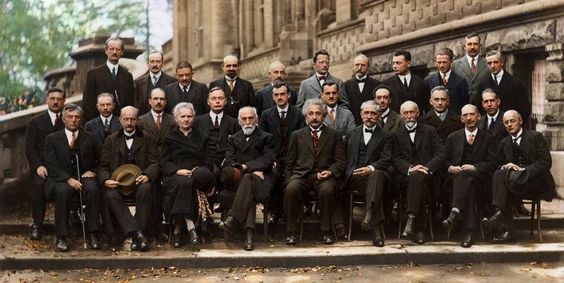Five Amazing Experiments That Changed the World of Classical Physics
Physics might seem complicated, but it’s full of fascinating stories. Some of the most important discoveries in history started with simple questions, daring experiments, and brilliant minds that weren’t afraid to challenge the status quo. Let’s take a journey through five legendary experiments in classical physics that not only answered big questions but also opened the door to even bigger discoveries.
Galileo’s Leaning Tower of Pisa Experiment: A Fall That Changed Everything
Imagine this: It's the late 1500s, and the world still believes in Aristotle's ancient idea that heavy objects fall faster than light ones. But one man, Galileo Galilei, isn’t convinced. He decides to put this idea to the test in a way that would go down in history.
Galileo climbs the Leaning Tower of Pisa, with two spheres of different masses in hand. Curious onlookers watch as he drops them at the same time. To everyone’s astonishment, both spheres hit the ground together, shattering Aristotle’s theory into pieces.
This wasn’t just a simple experiment—it was a powerful demonstration that challenged centuries of thought. Galileo’s experiment showed that, in the absence of air resistance, all objects fall at the same rate, regardless of their mass. This idea was crucial for the development of the laws of motion that Isaac Newton would later formalize.
Newton’s Prism Experiment: Unlocking the Secret Rainbow in Light
Fast forward to 1665, and we find Isaac Newton in his darkened room, playing with prisms. Yes, you read that right! Newton wasn’t just a genius with gravity; he also had a deep curiosity about light.
Newton directed a beam of sunlight through a prism and watched in awe as it split into a beautiful spectrum of colors—red, orange, yellow, green, blue, indigo, and violet. But he didn’t stop there. He took another prism and passed the rainbow colors through it, merging them back into white light.
This experiment was more than just a colorful display. Newton’s prism experiment was a groundbreaking discovery that showed white light is actually made up of all the colors of the rainbow. This shattered the old belief that light was a simple, pure substance. Newton’s work laid the foundation for optics, helping us understand not just light, but also the way we see the world around us.
The Cavendish Experiment: Weighing the Earth with a Couple of Lead Balls
Let’s travel to 1797, where we meet Henry Cavendish, a shy but brilliant scientist with a unique mission—he wanted to weigh the Earth. But how could someone measure something so massive?
Cavendish used a device called a torsion balance, which was basically a horizontal bar suspended from a thin wire. He attached two small lead balls to the ends of the bar and placed two larger lead balls near them. The small balls were attracted to the larger ones due to gravity, causing the bar to twist slightly. By measuring this tiny twist, Cavendish could calculate the force of gravity between the balls.
From this, Cavendish didn’t just measure gravity—he calculated the mass of the Earth! His experiment was so precise that it allowed him to determine the gravitational constant, which is still used in physics today. Cavendish’s work wasn’t just a triumph of science; it was a masterclass in patience and precision, showing that even the most massive problems can be solved with the right tools and a lot of determination.
Young’s Double-Slit Experiment: Revealing the Wave Nature of Light
Now, let’s jump to 1801, where Thomas Young was about to change our understanding of light forever. Young was fascinated by the mysteries of light—was it made of particles, or did it behave like a wave? To find out, he set up a simple but brilliant experiment.
Young shined a beam of light at a screen with two closely spaced slits. What happened next was extraordinary. Instead of just two bright spots of light, Young observed a pattern of alternating light and dark bands on the screen behind the slits. This was an interference pattern, something that could only be explained if light were behaving like a wave.
Young’s double-slit experiment was a breakthrough that proved light has wave-like properties. This idea was revolutionary and would later play a key role in the development of quantum mechanics, where scientists would discover that particles like electrons also behave like waves. Young’s experiment was a beautiful demonstration of how sometimes, the simplest setups can lead to the most profound discoveries.
Foucault’s Pendulum: The Swing That Proved the Earth Rotates
Our final stop is in 1851, where Léon Foucault is about to give us visual proof that our planet is spinning. Until then, the Earth’s rotation was something people accepted but couldn’t see with their own eyes. Foucault wanted to change that.
He set up a large pendulum in the Panthéon in Paris—a massive weight hanging from a long wire, free to swing in any direction. As the pendulum swung back and forth, people noticed that the direction of its swing slowly changed over time. But the pendulum wasn’t changing its direction; it was the Earth rotating.
Foucault’s pendulum was a simple yet powerful demonstration of the Earth’s rotation. It made the invisible visible and gave people a way to see the motion of our planet in real-time. This experiment wasn’t just a clever trick; it was a milestone in our understanding of Earth and its place in the cosmos.
Why These Experiments Still Matter:-
These five experiments didn’t just answer questions—they sparked new ones. They showed us that the world is full of surprises, waiting to be discovered by anyone with a curious mind and a willingness to challenge the norm. From Galileo’s daring drop to Foucault’s swinging pendulum, these experiments have shaped the way we understand the physical world, and their lessons continue to inspire scientists today.
Picture courtesy:-
1. Pinterest.in
2.https://en.m.wikipedia.org/wiki/Double-slit_experiment
3.https://www.smithsonianmag.com/smithsonian-institution/
4. https://www.quora.com/Does-Young%E2%80%99s-double-slit-experiment-support-the-wave-nature-or-dual-nature-of-light

Comments
Post a Comment